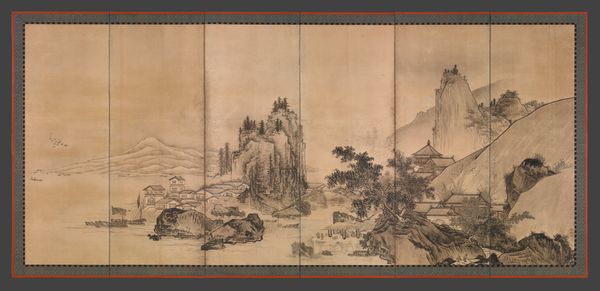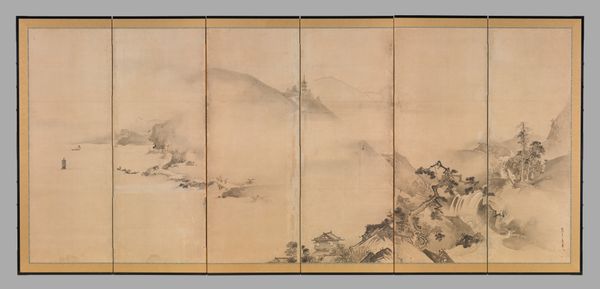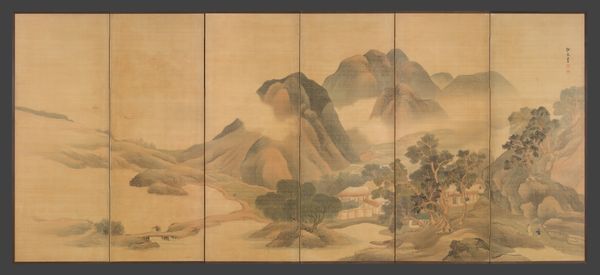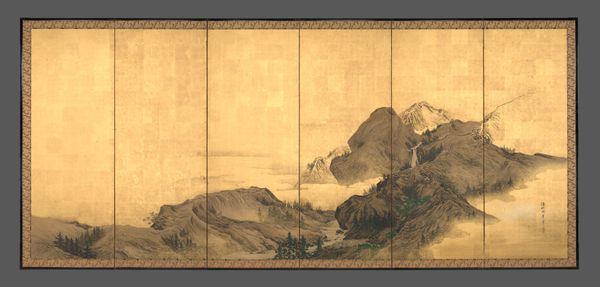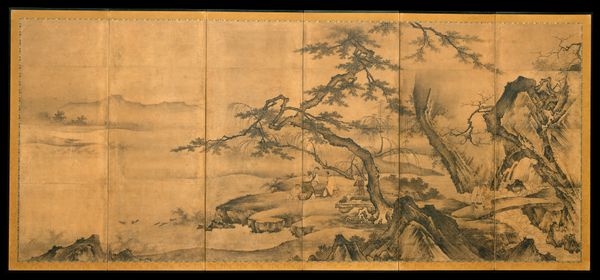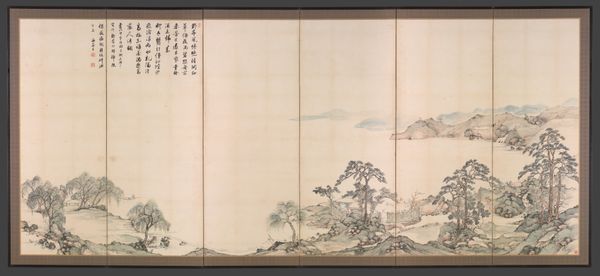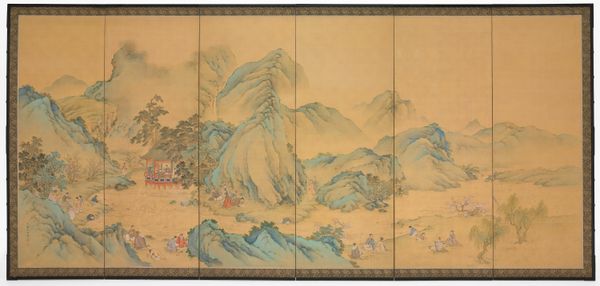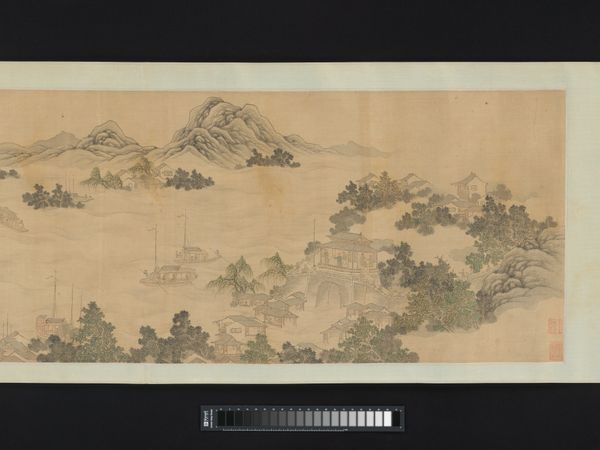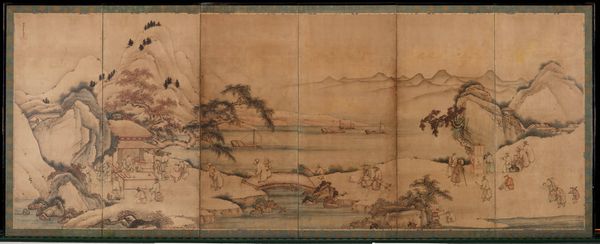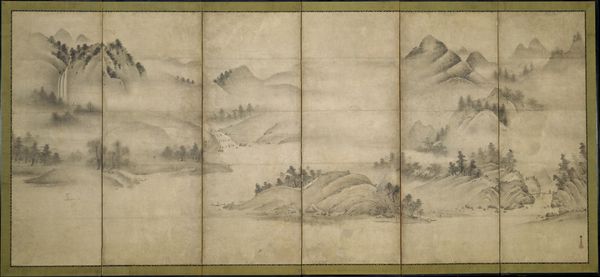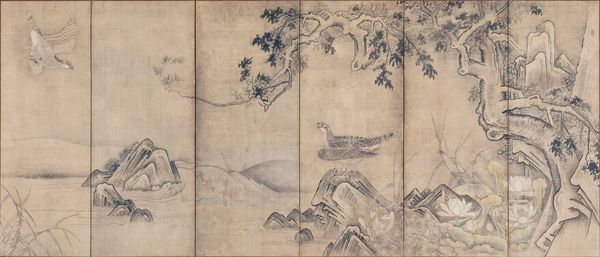
tempera, painting, watercolor, mural
#
lake
#
toned paper
#
medieval
#
tempera
#
painting
#
asian-art
#
landscape
#
house
#
watercolor
#
mountain
#
mural
#
yamato-e
Dimensions: .1: 68 3/4 in. × 12 ft. 2 3/8 in. (174.6 × 371.8 cm) .2: 69 in. × 12 ft. 2 3/8 in. (175.3 × 371.8 cm)
Copyright: Public Domain
Editor: Here we have "View of West Lake," painted between 1634 and 1676 by Kusumi Morikage, using tempera, watercolor and ink on toned paper. It's a sprawling landscape, quite panoramic in its scope. I'm struck by how hazy and dreamlike it feels. What's your take on it? Curator: I see a complex negotiation of power and representation. These types of landscape paintings, especially in the Yamato-e tradition, are never just about the scenery. Ask yourself: who has the privilege to enjoy such a vista? Who is included, and more importantly, who is excluded from this idealized scene? How does the artist situate the relationship between humanity and nature? Editor: That's fascinating. I was just thinking about the aesthetic qualities, the composition and the use of space. I didn't consider who might be left out of this "perfect" landscape. Curator: Exactly! The architecture nestled within the landscape signifies culture, order, and hierarchy. But where are the farmers, the laborers, the people who actually sustain this idealized world? Consider the sociopolitical implications embedded in the artist’s choices. What stories are *not* being told? Editor: I see what you mean. The focus is definitely on the elite, the educated class who could appreciate this type of art and the lifestyle it depicts. It really challenges the way I initially perceived it, as simply a beautiful scene. Curator: Precisely. And what about the artist themselves? What positionality did Morikage have when creating the work and including subtle yet present political commentaries? By examining the painting through a lens of social equity, we can begin to deconstruct these historical representations and understand how art can both reflect and reinforce power structures. Editor: That's a powerful way to look at it. I’ll definitely carry that perspective with me. Curator: It’s crucial to remember that art is always in conversation with its context, and understanding that conversation allows us to engage more critically with the world around us.
Comments
No comments
Be the first to comment and join the conversation on the ultimate creative platform.

